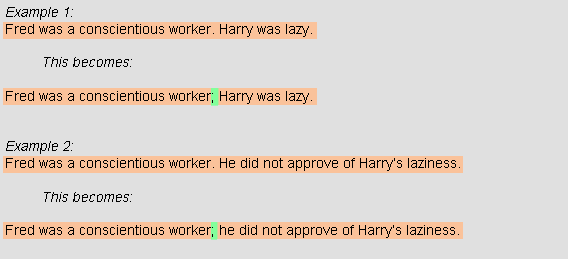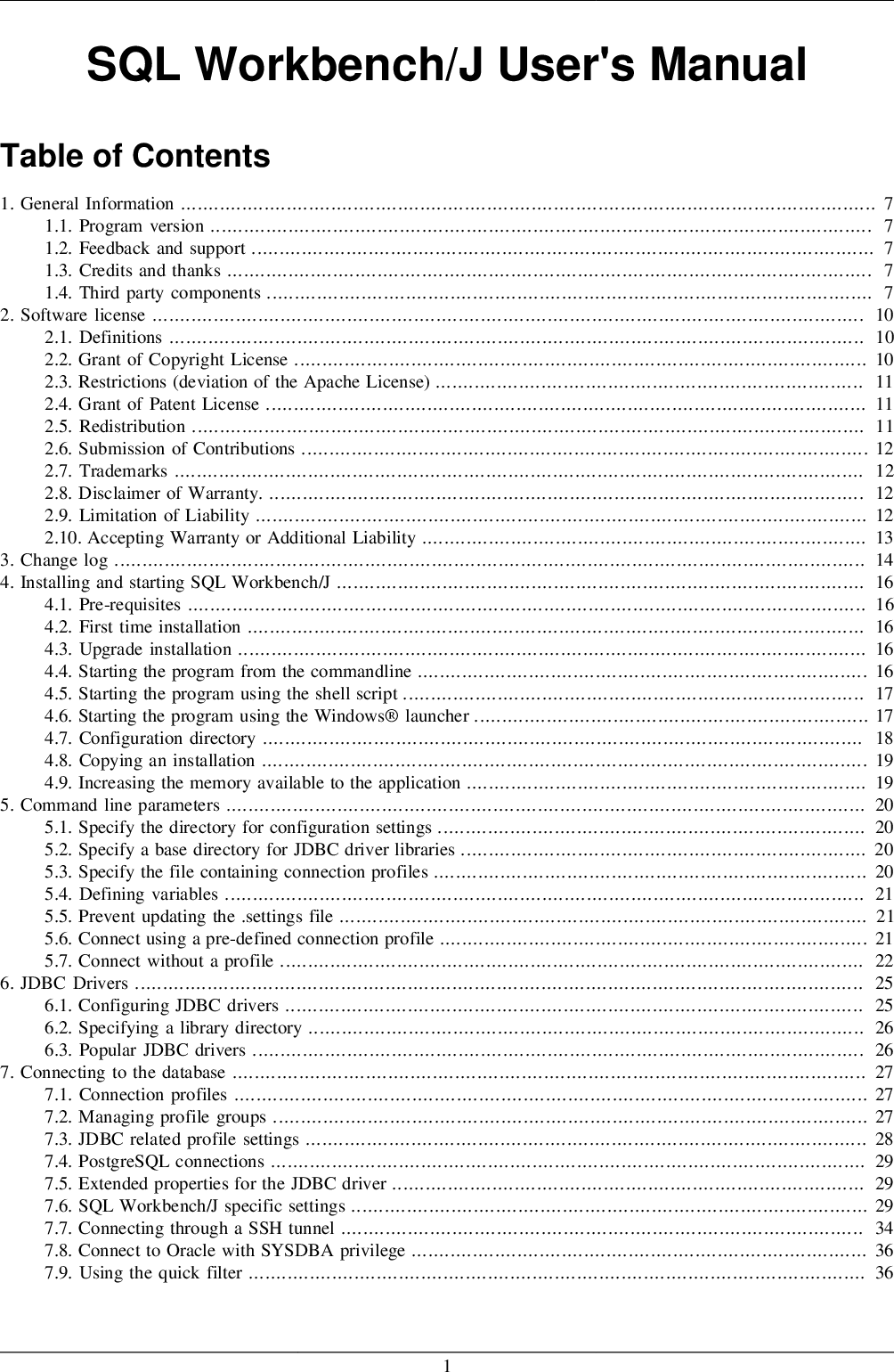When a verb follows 'as well as,' you will use the '-ing' form of the verb. 'As well as' phrases do not change the tense of the subject/verb. A clear sentence enables a reader to comprehend meaning easily.
To write a compact paper with a graceful flow of ideas, writers use specific techniques to improve sentence clarity. This site provides detailed instructions and examples to help you spot and fix unclear sentences. There are some words in the English vocabulary which sound the same as another word but have a drastically different meaning.
These words are called homophones and are very common in everyday English. Homophones are pairs, and occasionally trios, of words that sound the same but have different spellings and different means. They often cause native English speakers problems and are a frequent source of questions for those who learn English online, especially those who learn English online. Incorrect word selection is often not found when spell-checking documents since many do not check for correct grammar. This adds another level of difficulty for those just learning English as the incorrect usage is not discovered until too late. Parentheses also signify a break in thought, but they mark an addition of information rather than an interruption like dashes do.
Rather than a surprise , parentheses are a gentler insertion in your sentence. Also like dashes, parentheses should be used sparingly. Too many can break the clarity and flow of your ideas. Another thing to keep in mind is that they are often seen as casual in tone, so make sure they are appropriate for the style of writing you are using. If not, punctuation marks such as commas are often more academically appropriate.
Word usage is vital when trying to convey a specific meaning to your audience. You can create a formal or informal voice through your words. If you are questioning how to establish your 'voice' as a writer, this article will help you to distinguish yourself. The site outlines how word choice affects your tone and, ultimately, your style. Are you writing your paper or is your paper being written by you? That last sentence contained both the active and passive voice .
Do you want your paper to be active? If you do not know the intricacies of using these forms of voice, or you just want to sharpen your active/passive knowledge, check out this site for a clear and simple explanation of the subject. Usually, effective writing uses the active voice and dodges the passive. However, particular situations are awkward or incorrect when expressed in the active voice. This article will explain the difference between active and passive voice and detail when to use each.
It will also review how to convert passive sentences into active ones. More complex sentences also have other elements, including adjectives, adverbs, prepositions and conjunctions. In language, the phrase ''as well as'' can be beneficial when used correctly.
Learn the meaning of the phrase and explore its comma usage and application in sentences through a series of examples. The balance of these elements is perfect. Two prepositional phrases of equal weight have been used. No commas needed because it's a simple sentence containing one subject and one verb. Passive voice is a sentence construction in which the object being acted on comes before the subject or actor, who is added at the end.
("The pizza is being eaten by zombies.") You may have learned that it is an error in academic writing, but, in fact, there are instances when it is preferred. This resource discusses the problems with passive voice and how to identify it, but also demonstrates when it is acceptable. Thatt's pretty much the way I see it. The point of punctuation should be to facilitate clarity.
As an EFL teacher, I am often asked for definitive rules of grammar and usage or to explain descrepancies among grammar books. I usually point out that for some languages (e.g. Spanish) there is a "Supreme Court" institution that has the final say on what is correct, but English has no such final authority. To a degree, common usage among popularly respected authors often tends to guide and dictate what is "correct". I ain't no expert, but that there's how I reckon it.
These examples show the general benefit of careful placement of the correlative conjunctions. Though none is likely to confuse people, the third is the tidiest. Some style authorities consider this tidiness an essential point of courtesy, but sentence structure is not something most readers pay much attention to – unless it's a mess.
Students commonly fear the semi-colon. Did you know that a semicolon should actually be used to separate two main clauses? With examples ranging from the discussion of hairy knuckles to advice about plague rats, the Oatmeal will help you learn to master this pesky punctuation mark.
You will learn about the different uses of semicolons; the internal semicolon is illustrated in this very sentence! In its poster format, you could easily forget that you're learning grammar. As said by the author, "Both bears and semicolons have pause." M.C.K. Use a semicolon between two independent clauses that are connected by conjunctive adverbs or transitional phrases.
Now you've read about the difference between 'since' and 'for', try writing some personal examples using each one. For example, describe how long you've lived at your present address, or how long you've worked/studied at your present company or school. By writing these examples you'll reinforce what you've learnt and you'll be able to use these words much more easily in conversation. If you do not use correct grammar and punctuation, your meaning will be unclear or ambiguous. Grammatical mistakes also slow down reading.
They may distract readers from the meaning and messages in your writing. Understanding how to put sentences together using correct grammar is therefore crucial for good writing. An em dash—inserted by typing Control+Alt+Minus between the words it separates—signals an abrupt break in thought. It can be seen as "surprising" the reader with information. If used judiciously it can mark a longer, more dramatic pause and provide more emphasis than a comma can.
If overused, it creates an impression of haste and carelessness and can diminish cohesion in your paragraphs. Think carefully before peppering your papers with them. Tony, your comment doesn't really relate to the post I've written, but because you asked nicely… Your sentence is actually two sentences, and they're already grammatically correct.
How To Use Is Also In A Sentence You can fix their style by following Vinetta's suggestions, and also by adding a full stop at the end. This example uses the same part of speech and the same tense —that is, the verbs 'wrote' and 'researched'. There are no commas needed because it is a simple sentence—a sentence containing one subject ('She') and two verbs. Also carries the same meaning as andand too.
Andconnects directly, alsoslightly less directly, and tootends to have more commas. If there is a more specific transition word that more precisely expresses the relationship between the two ideas at hand, you should probably use it . No, it's their superhero of a brother, the semicolon.
From fixing run-on sentences to connecting items in a list, semicolons can be incredibly effective…if you know how to use them. This site explains the rules of using a semicolon super easily and gives you examples if you still aren't sure. Use a semicolon between independent clauses joined by a coordinating conjunction if the clauses are already punctuated with commas or if the clauses are lengthy. A semicolon is most commonly used to link two independent clauses that are closely related in thought. When a semicolon is used to join two or more ideas in a sentence, those ideas are then given equal position or rank.
Were may be formally correct, but because the subjunctive mood has largely fallen out of common use, was may slip into yours and others' speech at times. A telltale sign that you're working with the subjunctive mood is the word if, because this suggests a hypothetical. "If I were to go shopping, I could search for spices," for example. It doesn't matter if the subject is singular or plural, or if it's first, second, or third person. If you're using the subjunctive mood, the grammatically correct past tense of to be is were.
This page describes the main elements of grammar in English. Other European languages have similar roots, and therefore similar conventions, although the placing of verbs and nouns may vary. However, in other languages, there may be very different elements of grammar. It is wise to have at least a broad awareness of grammar before you start writing in any language. Write two examples of nouns and verbs, and then combine them to form sentences. A sentence is a collection of words that convey sense or meaning, and is formed according to the logic of grammar.
A sentence is a collection of words that convey sense or meaning and is formed according to the logic of grammar. As stated earlier, 'as well as' is a conjunction, or part of speech, that means in addition. Determining which form of the verb to use after 'as well as' often leads to a common error, such as showing the subject in its plural form. Now that you have learnt when you can start a sentence with the word also,it's time to use your skills in practice.
Sign up to become a freelance writer with our content writing company and earn money writing content! Become a part of our writers' community providing our clients content writing services. Using also at the start of a sentence, whilst sometimes being frowned upon in formal writing, is okay if you are continuing a train of thought. Issues arise if the thought is fragmented and unrelated to the rest of the information present.
It's also slightly more informal than some of the other words such as furthermore, which can be used instead. Similar to other grammar issues, try and avoid using it in consecutive sentences. Otherwise, the result will be choppy. When it comes to our writing, we don't often know all the rules. This is especially true when it comes to starting sentences with different parts of speech. We also do different things and follow different rules when we speak versus when we write, and the two can get carried over.
With all that in mind, we'll discuss whether or not you can start a sentence with also. Browse other questions tagged word-usage adverbs word-order . A is for action ; E is for end result . But to fully understand a word's meaning, it helps to see it in action. Let us review some of the grammar rules that regulate affect and effect with some tips and examples. Both of these words are verbs and nouns and their meanings overlap.
This can be confusing to those whose first language is English. It can be baffling to those whose first language is one other than English. When writing a formal essay, it is easy to feel as if your writing is droning on without variation or intrigue. You can take simple steps to interest the reader and improve your writing style. This site outlines various ways of altering sentence length and type to create a more interesting essay.
These are some of the little things that make the comma so special. It is a unique little mark on a page that is so versatile. While commas can be used a multitude of ways, a missing one can drastically change the meaning of a sentence or piece of writing. Check out this site to avoid those pesky mistakes.
It is important to capitalize titles correctly, but sometimes it seems each person has learned different rules for doing so. Grammar Girl provides a few universal rules for capitalizing titles and other general concepts, such as consistency in the capitalization of words. Subject-verb agreement may seem easy, but conflicts can sometimes emerge, as, for instance, when a phrase squeezes between the subject and verb.
Consult this page before trying to wrangle your subjects and verbs into agreement. Subject verb agreement may seem straightforward, but this site highlights confusing circumstances and clarifies when a subject is singular versus plural. The conjunctive adverb however signals a connection between two independent clauses, and commas should not be used to connect independent clauses if there is no coordinating conjunction. Both parts of the sentence are independent clauses, and commas should not be used to connect independent clauses if there is no coordinating conjunction. This mistake is known as a comma splice. Speech is always evolving, and the subjunctive mood is used far less extensively than it was in the past.
You can also replace the word "your" with the possessive version of a noun, although this will change the sentence completely. In the sentence "Is this your bowl? " you can substitute "the dogs" for "your" and the sentence is correct. Today, we're looking at the word 'respectively', which we use to refer to something previously mentioned. This is a great word when used correctly, allowing us to clarify how different parts of a sentence relate to one another.
























































